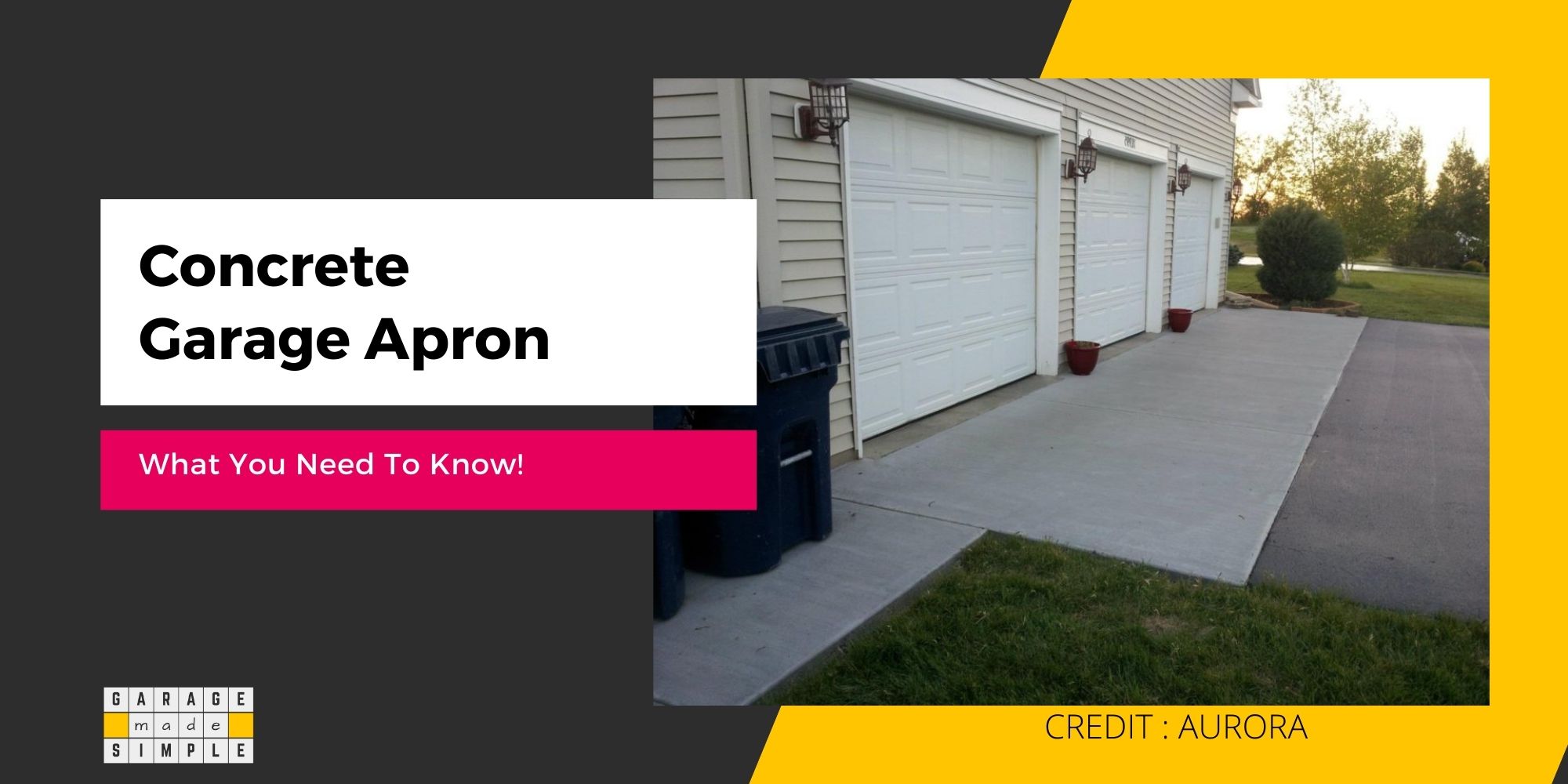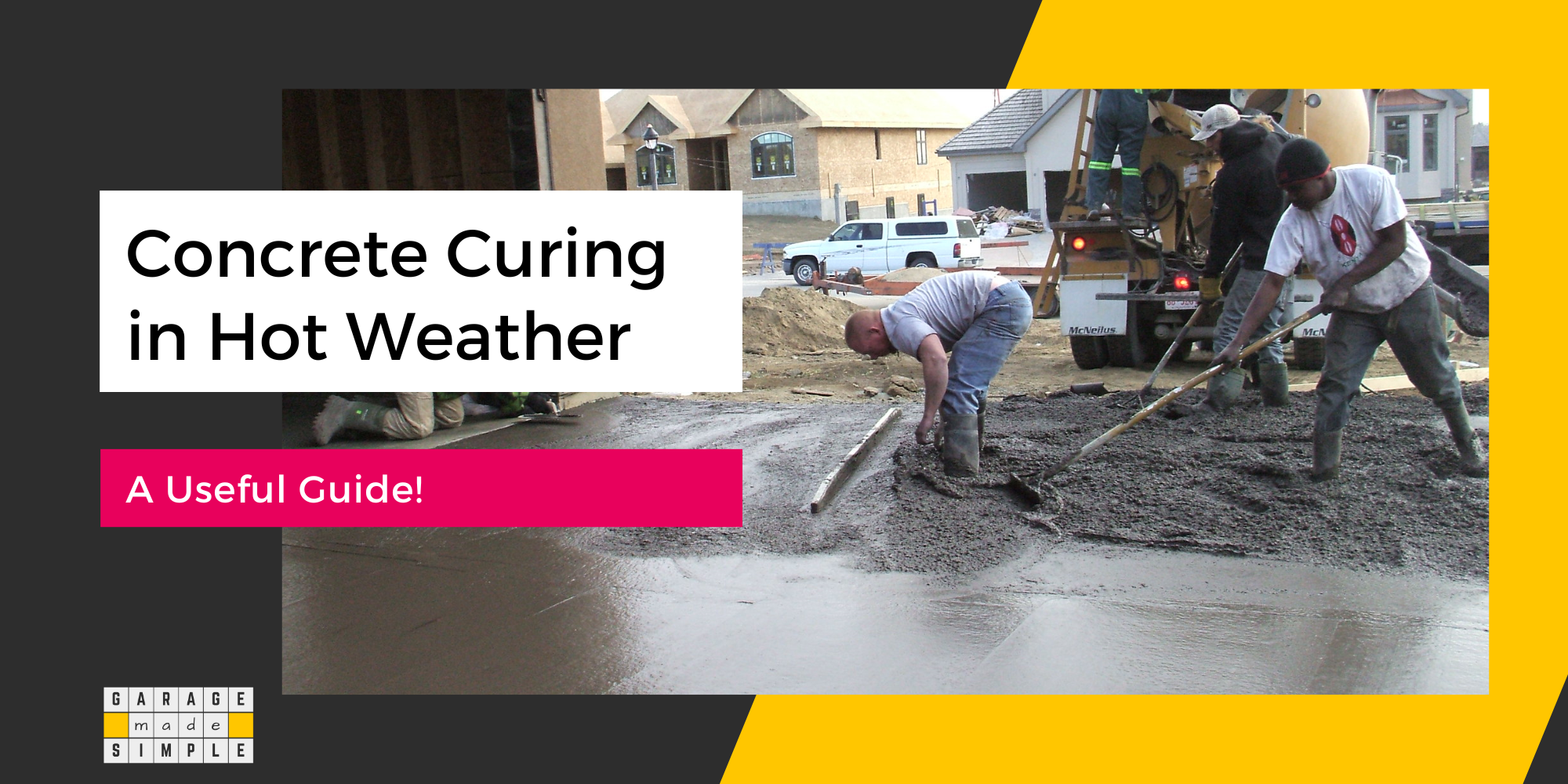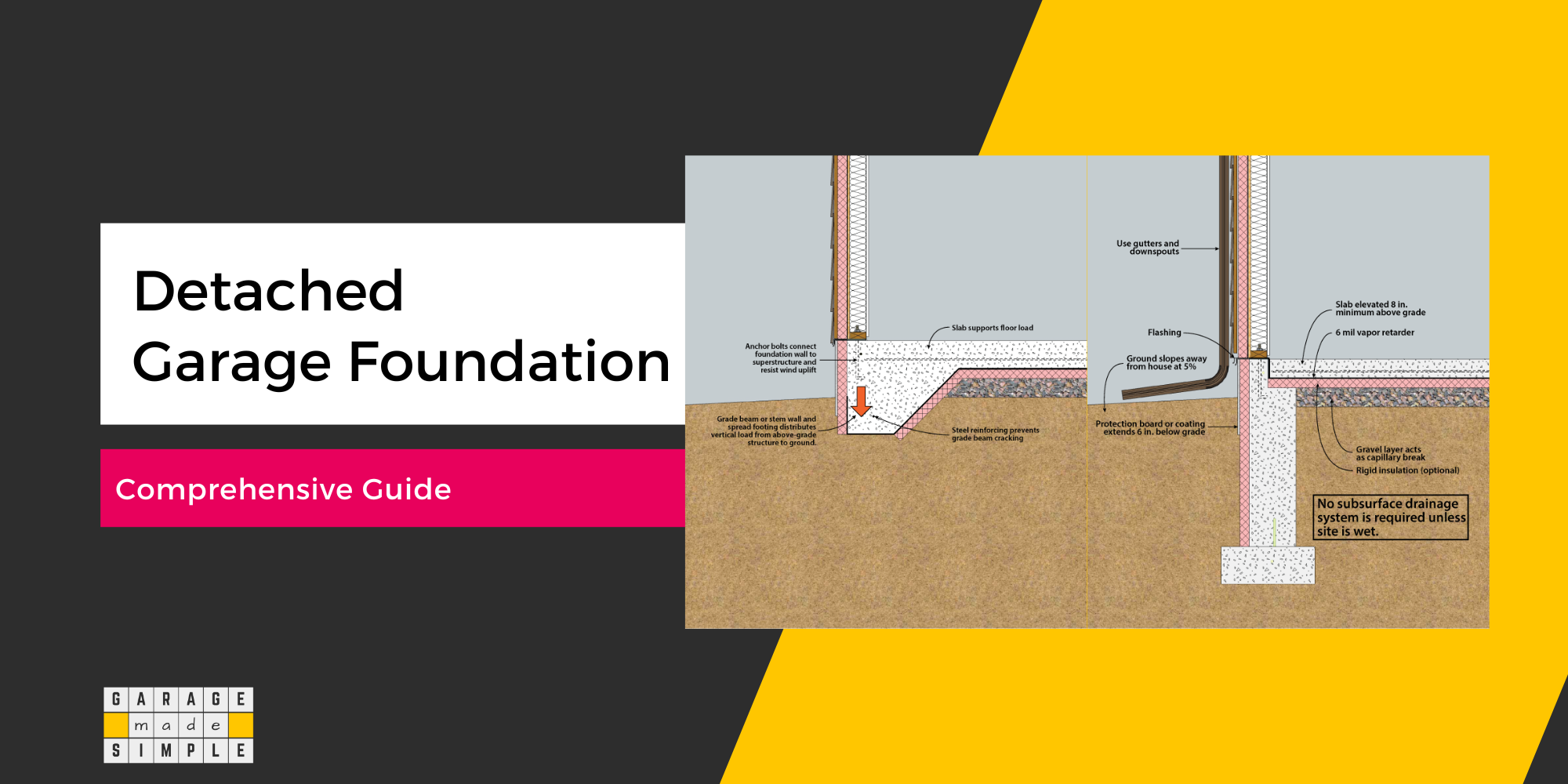Does a Garage Need Footings or Foundations? Useful Information
As an Amazon Associate, I earn from qualifying purchases.
Footings and foundations are the base upon which a building rests, ensuring stability and structural integrity.
Considering that a garage, unlike your home or larger buildings, is a rather light and simple structure, the question, does a garage need footings, has its merits.
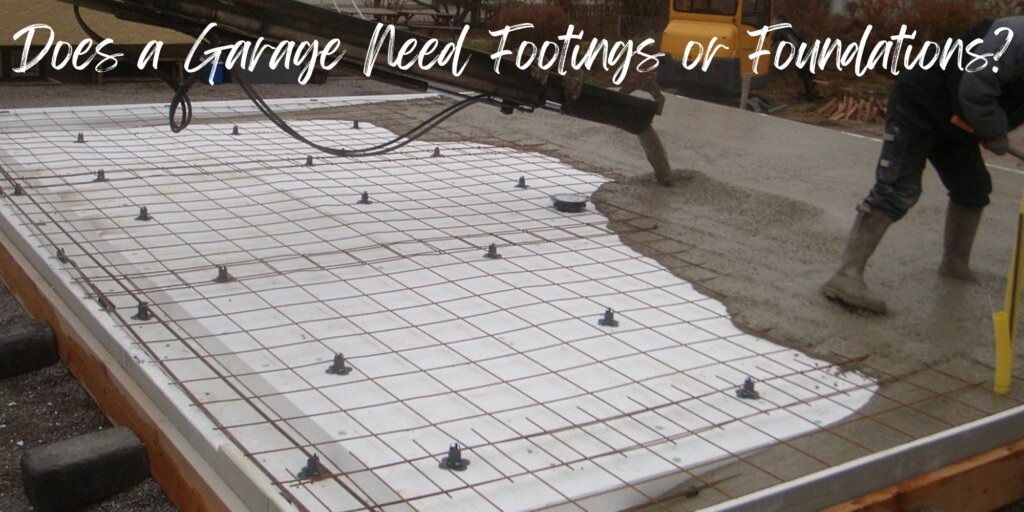
Basics of Garage Footings and Foundations
Footings are the lower part of a foundation that distributes the weight of the structure above it to the ground. Footings are typically wider than foundations, made from concrete, and always below ground level.
Foundations, on the other hand, encompass footings and extend upwards to support walls, columns, and other structural elements.
Do not worry if this still sounds a bit unclear. The purpose of this article is to dive deep into everything that you need to know about garage footings and foundations. So, let’s get started.
1. Does a Garage Need Footings?
Whether you plan to do most of the work yourself or outsource it to a local contractor, the first few steps will be dealing with garage footings and foundations. So, does a garage need footings?
A detached garage does not need footings whereas, an attached garage needs footings. Here is why.
A detached garage is usually built on a slab-on-grade foundation that does not need separate footings.
An attached garage, on the other hand, is generally built on a point or continuous, T-shaped foundation, along with the house. Such garage foundations always have footings.
2. What Is the Purpose of Garage Footings and Foundations?
The purpose of garage footings is to support the foundation and prevent it from settling by distributing the load evenly over a larger area.

Every building, whether a house or a garage, must rest on a foundation. Foundations are necessary to
- bear the load of the building
- anchor it against natural forces such as earthquakes
- isolate it from ground moisture
In T-shaped foundations, the footing is the part of the foundation that is directly in touch with the ground. The area of the footing is much higher than the area of the foundation wall or column.
The load of the structure above passes through the foundation to the footings. The load per square foot is reduced significantly by the higher area of the footing.
The primary function of garage footings is to distribute the load of the structure over a larger area to prevent settling or shifting. This is especially useful if you are building on soft soil with low load-bearing capacity.
As garage footings under the foundation wall are continuous, they ensure the load of the entire garage structure is distributed evenly along the perimeter.
In case of minor localized ground settlement, the entire footing, foundation, and garage structure will settle uniformly. This will prevent cracks from developing in the garage floor or walls.
Moreover, footings are placed below the frost line to shield the building from ground movement due to the freeze-thaw cycle.
Concrete footings are cast in a trench and are reinforced with rebars. The footings are anchored to the foundation, which in turn is anchored to the concrete beams or slab.
The entire structure is integrated as one piece. Even if the soil conditions are not the same over the entire garage floor area the structure will settle uniformly without creating stress or cracks.
3. Can You Pour a Garage Slab without Footings?
Yes, you can pour a garage slab without footings.
For light structures such as sheds and even standard garages pouring a concrete slab without footings is a common practice.
When pouring a concrete slab without footings you must ensure that
- The grade on which you are building the garage is level and not on a steep slope.
- The grade will have little erosion or soil subsidence.
- The base for the concrete slab is prepared in accordance with the best practices.
- The garage walls & roof structure are made of wood studs and joists that are lightweight.
- The load on the slab-on-grade does not exceed the recommended compressive strength of the concrete.
To be on the safe side you can pour the slab-on-grade with thickened and reinforced edges. The thick edges are, in fact, integrated footings of the slab-on-grade foundation.
The edges take the load of the entire garage structure and distribute it over a wider area with higher strength.
Slab-on-grade with thickened edges can permit you to even build a floor above your garage. You could then have a studio apartment above your detached garage, for example.
Attached vs. Detached Garages: Footings and Foundations
Let me explain the difference between an attached garage and a detached garage and why the former needs footings and the latter does not.
4. Does an Attached Garage Need Footing?
The attached garage is an integral part of the house plan, design, and construction. Structurally speaking, the house and the attached garage are one unit.
The house will certainly require a foundation and footing. When the attached garage is being constructed along with the house it is just a part of the complete house footing and foundation structure.
This way the attached garage structure is part of the whole structure. Whatever the foundation type, both the house and the attached garage will always settle at the same rate. This ensures that there is no stress leading to cracks.
The situation gets very tricky if you want to add an attached garage to an existing house. It is best to consult a qualified structural engineer or a contractor you can trust.
Make sure to check with the local building authority as well. They may have certain regulations or advice based on the local soil and weather conditions.
5. Does a Detached Garage Need Footing?
Most detached garages are simple structures and are, therefore, built on a slab-on-grade foundation.
In most soil conditions a slab-on-grade does not require a footing if the loading is going to be nominal, as is the case in a simple detached garage.
Even for a slab-on-grade foundation for a detached garage, you have the option of strengthening the edges by making them thicker at the time the concrete is poured.
This is always a good idea as it will not increase the cost too much but will make the detached garage a lot stronger.
Large detached garages designed to park 3 or 4 cars or those that will have a second level are much heavier. A slab-on-grade foundation may not be able to take the load.
You may then choose a point T-shaped foundation with columns or a continuous T-shaped foundation with foundation walls.
In either case, a T-shaped foundation implies that garage footings are required.
6. Footings vs Foundations
A detached garage foundation connects the garage walls to the ground and transfers the load from the garage floor, walls, roof, etc. uniformly to the ground for strength and stability.
On the other hand, footings for the garage are relatively small pieces of concrete on which the detached garage foundation sits. Garage footings tend to be deeper into the ground and are typically used in conjunction with shallow foundations.
Footings for the garage are placed below the frost line and provide additional stability to the detached garage foundation.
They are typically made with reinforced concrete and help redistribute the load from the detached garage foundation into the earth and soil below.
Garage footings are wider than the detached garage foundation wall they support so there is room to place wall forms.
The following table summarizes the differences between footing and foundation:
Comparison of Footings vs. Foundations
| Feature | Footings | Foundations |
|---|---|---|
| Purpose | Distributes the weight of the structure to the ground. | Provides overall structural support and stability for the entire building. |
| Location | Positioned at the base of the foundation, in direct contact with the soil. | Extends vertically upward from the footings to support walls or floors. |
| Key Components | Typically consists of reinforced concrete pads or strips. | Includes walls, slabs, and other elements built on top of the footings. |
| Function | Prevents sinking or shifting due to soil conditions. | Depth is based on frost lines, soil type, and building codes. |
| Soil Interaction | Directly bears on and interacts with the soil below. | Works indirectly through the footings to stabilize the structure. |
| Depth | Depth is based on frost lines, soil types, and building codes. | Varies depending on the type of structure and design (e.g., crawl space, slab). |
| Common Materials | Reinforced concrete with rebar for added strength. | Concrete, reinforced concrete, or masonry depending on the type. |
| Design Variations | T-shaped, thickened edge, or trench footings. | Includes slab-on-grade, stem wall, and crawlspace foundations. |
| Building Code Requirements | Typically requires precise depth and width specifications. | Must meet broader load-bearing and safety standards based on the structure. |
| Common Problems | Issues include frost heave, settling, or poor soil compaction. | Depth is based on frost lines, soil type, and building codes. |
T-Shaped Detached Garage Foundation
The T-shaped detached garage foundation gets its name as its cross-section looks like the inverted letter T. It can be a “point” or a “ continuous” foundation. T-shaped foundations are necessary when building where
- Ground freezes
- Ground is sloped
- Loads are high
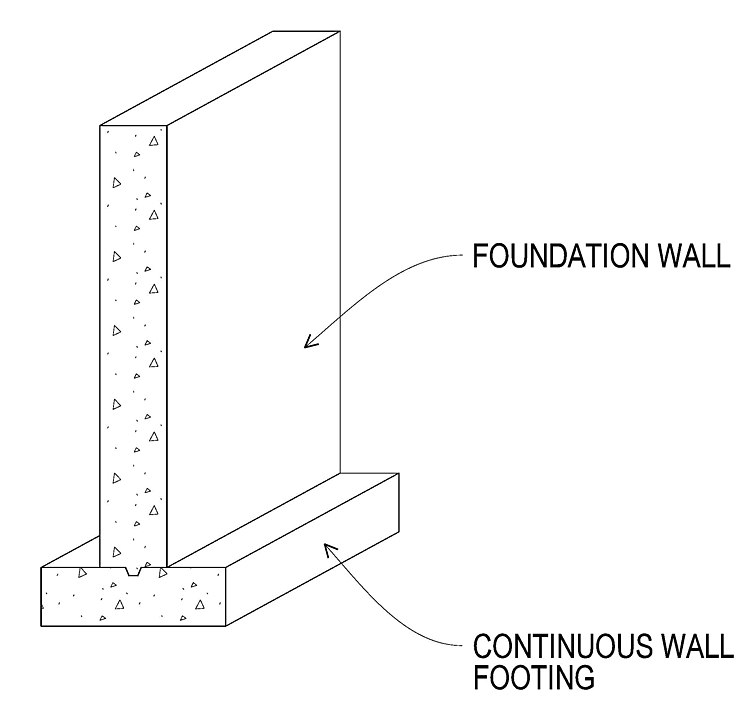
Slab-On-Grade Foundation
The slab-on-grade foundation is a single concrete slab poured directly onto a base of gravel and sand. The slab can be poured thicker at the edges to form an integrated footing. Slab-on-grade foundations are ideal where
- The ground does not freeze
- The ground is level & stable
- Loads are moderate
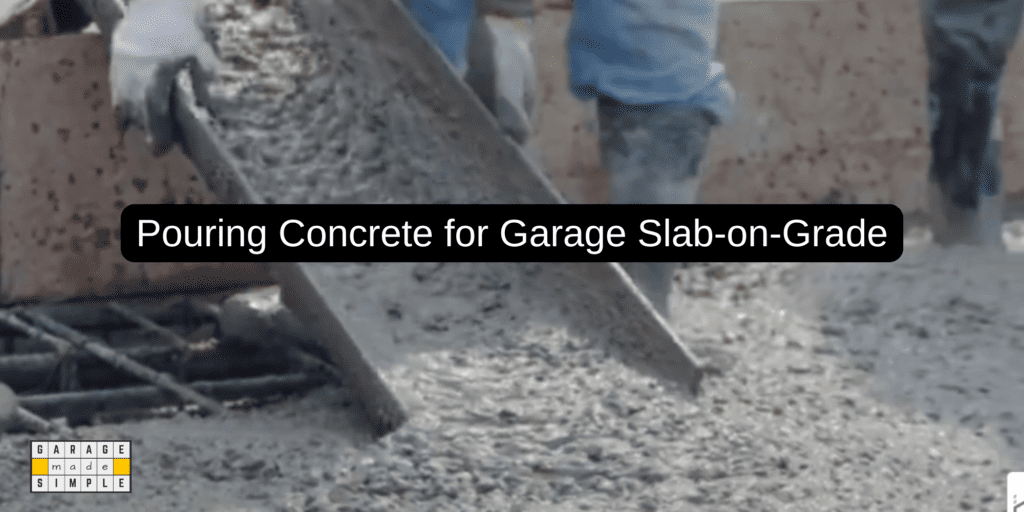
Planning and Preparation
Before you start digging, spend some time on the research, testing, planning, and engineering drawings.
7. Complying with Local Building Codes
Local building codes vary from county to county depending on climate, soil conditions, and typical frost line depth. Regions with colder climates often require footings to extend below the frost line to prevent frost heave.
Your local jurisdiction will specify minimum footing depths, widths, and materials. Depending on the garage size and intended use, this might involve requirements for specific foundation types, such as a T-shaped foundation or a slab-on-grade foundation.
Local building codes may also mandate using materials like a high-quality concrete mix, reinforced with rebar or wire mesh to enhance footing strength.
Some areas may require a vapor barrier or expansion joints to address moisture and thermal expansion issues.
It is best to consult a structural engineer or a foundation contractor familiar with your local codes. They can ensure code-compliant garage footings and foundation design.
These detailed drawings are an essential part of permit applications. Expect a building inspector to visit the construction site to verify that the footings are as per the drawings approved and meet code requirements.
8. Testing for Soil Conditions
The design of garage footings and foundations depends heavily on the soil conditions at the construction site. Different soil types—such as clay, sand, gravel, or loam—have varying load-bearing capacities.
For instance, expansive soils like clay can swell when wet and shrink when dry, causing foundation movement. On the other hand, sandy soils can shift easily and fail to provide adequate support without additional reinforcement.
Failing to account for the frost line can result in frost heave, where freezing water in the soil pushes up the footings and damages the foundation.
Conducting soil testing is essential to identify potential challenges. A structural engineer or foundation contractor can assess the site’s soil composition, moisture content, and load-bearing capacity.
Solutions like soil compaction, installing a stem wall foundation, or underpinning with piers may be recommended, if the soil is inadequate.
Technical Considerations
9. How Deep Should Footings for a Garage Be?
How deep the footings for a garage should be depends on
- Depth of the Frost Line
- Local Building Code
- Best Building Practices
Depth of the Frost Line
The frost line—also known as frost depth or freezing depth—is most commonly the depth to which the groundwater in soil is expected to freeze.
WIKIPEDIA
If you live in an area where the grade experiences ground movement due to the freeze-thaw cycle, then you have to place the footings below the frost line. Most northern states in the US have frost lines that are 36” – 60” deep.
The ground about the frost line is unstable for many parts of the year due to the freeze-thaw cycle. The footings therefore need to go below the frost line so that they are on relatively stable ground.
Placing the footings below the frost line is most definitely a requirement for houses and larger buildings. But even a detached garage with standard loads can have cracked floors and walls if the footings are above the frost line
Local Building Code
The best practice is to check the local building code. The code will usually specify how deep garage footings should be. This is determined by experts based on soil & climate data for your specific area.
By keeping the garage footings below the prescribed local building code, you can not only be code-compliant but also have a safe & durable garage. In the long run, the extra cost will be well worth it.
Freeze-Thaw Cycle Free Zones
In the central regions of the US, the frost line can be between 6” and 36”. In warmer states such as Florida, Texas, or California it can be even lower than 6”. The freeze-thaw cycle does not have much of an impact as temperatures are unlikely to fall below freezing.
In such zones, check out if there is a local building code on how deep garage footings should be. Comply with the code, if there is one.
Otherwise, the best practice is that the top of the footer should be 36” below the final grade. As the footer height is typically 8”, the bottom of the footer should be 42” below the final grade.
10. How Do You Dig Footings for Garage?
Before you start to dig the trench for footings for the garage, you’ll need to do a few calculations. Let us say the foundation wall is going to be 8” thick and the footing will extend 12” on each side. Then the full width of the footing will be 32”.
Let us say you require 18 inches on each side as working space. This brings the trench width to 68” (18”+32”+18”).
The edges of the final garage floor should fall on the centerline of the trench. Subtract the trench width from the length and width of the garage floor. This is the perimeter that needs to be marked out on the ground using stakes.
Drive a stake at each of the four corners first. Tie a string from one stake to another and mark the ground with orange spray paint. All the digging should happen outside this orange box.
The depth of the trench will be dictated by the local building code, based on the frost line in your area. If there is no code a depth of 42” – 48” should be good.
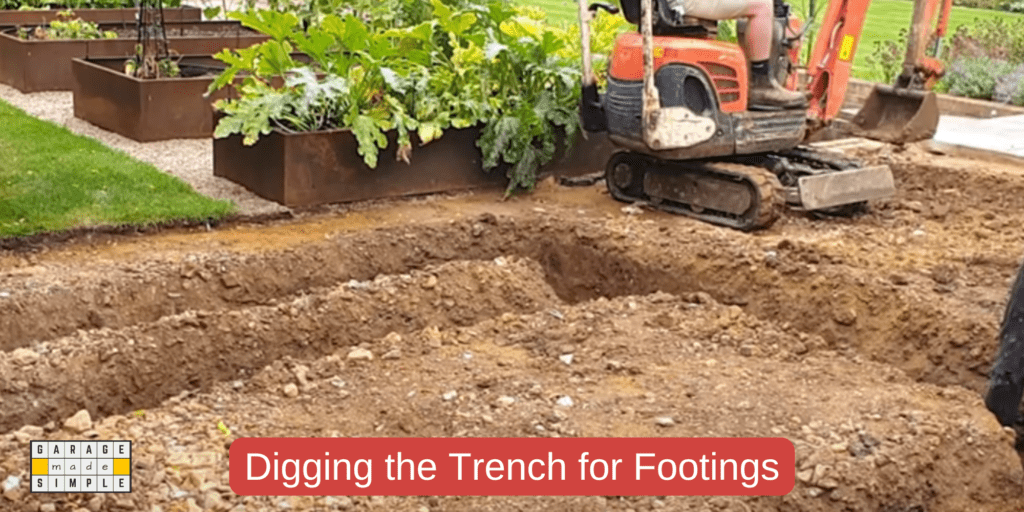
The best way to dig up a garage footing trench is to rent a mini excavator. The process will be quick and easy. You should be able to complete the digging of a 2-car garage footing trench, within a day.
11. Do I Need Rebar in the Footings for the Garage?
You should definitely reinforce the concrete footings for the garage with rebars. Concrete by itself has excellent compressive strength but relatively poor tensile & flexural strength. Rebars provide tensile & flexural strength.
The garage footings will not only transfer the compressive load from the foundation walls to the ground below but will also need to stay strong under tensile & flexural stresses created by shifting ground.
Reinforcing concrete footings with steel rebars will reduce the risk of the garage footings cracking when the ground around it shifts and exerts lateral pressure on it.
Freeze-thaw cycles, temperature fluctuations, and changes in moisture levels cause the ground to swell and shrink. As the movement is not uniform the concrete footing will experience bending stress
Garage footings poured below grade and having foundation walls on them should be reinforced by horizontal rebars running through the entire length of the footings. Typically there should be two courses of horizontal #4 rebar; one 3” from the top and the second 3” from the bottom.
For more information on footings and code compliance, you should refer to section R403 of 2021 International Residential Code (IRC).
12. How Do You Pour Footings for the Garage?
The way to pour garage footings is in principle similar to the way you would pour a slab-on-grade. You must make sure while digging the trench for the footers and the foundation wall that the bottom of the trench is level all across. The grade where the footer will go should be stamped firm.
Now place forms made from wood planks and kept in place with wood or steel stakes. The interior dimensions of the form should be the same as the width and the depth of the footer.
Place rebar chairs on the grade. The rebars will rest on these. The rebars must be within the footing and not at the bottom or top of the footing. Only then can rebars provide tensile & flexural strength.
Now you can pour the concrete within the form. You can remove the forms the next day.
Common Problems You May Face
Garage foundations are susceptible to several issues, including cracked concrete, foundation settling, and water damage. These problems are sure to compromise the stability and lifespan of your garage.
13. How to Avoid the Most Common Problems
However, with proper planning and preventative measures, they can be avoided.
Cracking often occurs due to improper curing, insufficient reinforcement, or thermal expansion. To mitigate this, use a quality concrete mix with adequate rebar or wire mesh reinforcement.
Include expansion joints to accommodate movement. Proper curing techniques, such as maintaining moisture levels during the initial setting period, also reduce the risk of cracks.
Foundation settling is another common issue, often caused by poor soil preparation. Uneven or unstable soils can lead to sinking or tilting foundations.
This can be avoided by conducting soil testing before construction and compacting the ground thoroughly. Underpinning or switching to a thickened edge slab may be necessary in extreme cases.
Water damage is a major concern, particularly if drainage issues aren’t addressed. Installing a sloped grade around the garage, along with a vapor barrier, prevents water from seeping into the foundation.
Properly placed gutters and downspouts also help direct water away from the structure. By addressing these potential issues during the planning phase, you can avoid costly foundation repairs and ensure a durable garage that stands the test of time.
Don’t Forget to Get a Reliable Cost Estimate
14. How Much Do Garage Footings and Foundation Cost?
The cost of garage footings can vary widely depending on the type of foundation, soil conditions, and local building requirements. I can not give you a figure for your garage but the information below will still be helpful for budgeting.
The most basic option, a slab-on-grade foundation, is typically the most cost-effective. Prices for garage slabs can range from $4 to $8 per square foot, depending on the depth of the slab and the materials used.
A T-shaped foundation, designed for cold climates, may cost $10 to $15 per square foot due to the additional excavation and deeper footings required to reach below the frost line.
If the soil at your site requires reinforcement, costs can increase. Solutions like stem wall foundations, which are ideal for uneven or expansive soils, may add $2,000 to $5,000 to your project, depending on garage size.
Additional measures like soil compaction, underpinning, or drainage systems can further increase the budget.
Factors Influencing Cost:
- Site Preparation: Costs may increase if significant excavation or grading is required.
- Soil Conditions: Poor soil conditions may necessitate additional reinforcement or deeper footings, raising costs.
- Thickness and Reinforcement: Standard slabs are typically 4 to 6 inches thick; thicker slabs or those requiring additional steel reinforcement will incur higher costs.
- Permits and Inspections: Local regulations may require permits which can add to the overall expense.
Material costs are a big chunk of the cost. A high-quality concrete mix, rebar, and wire mesh are essential for a durable foundation.
Prices for concrete alone average $120 to $150 per cubic yard. Labor costs, including hiring a foundation contractor and excavation crew, must also be factored in.
By working with a structural engineer or contractor to plan your project, you can estimate the costs more accurately.
Thank you very much for reading the post. I do hope you found it informative and useful.



